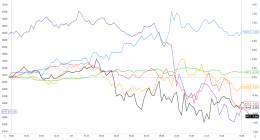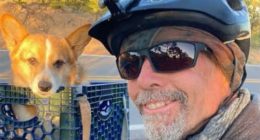
The idea of product-market fit needs to be flipped on its head entirely.
December 11, 2018 5 min read
Opinions expressed by Entrepreneur contributors are their own.
Product-market fit is the holy grail of any nascent startup. When developers design without it, they are often left in pre-launch coding purgatory, and when investors push for rampant growth without it, startups often fail. In a recent piece for FirstRound, Superhuman founder Rahul Vohra he notes that getting product-market fit right requires you to dig deep as a founder by surveying your clients on their user experience. When a 40 percent threshold of satisfied users is reached, those users’ feedback should be further segmented and analyzed into the most important SaaS features to build out.
Related: How to Find the Holy Grail of Product-Market Fit
While I agree with Vohra that client feedback is invaluable, I would argue that the idea of product-market fit needs to be flipped on its head entirely. The best way to not waste years incubating or waste money growing a business with no market is to think in the reverse — find your market, then build your product.
The reverse — “market-product fit” — may sound counterintuitive, but its the most efficient and cost-effective way to build a successful startup. In the case of Superhuman, Vohra admits that he had to keep tweaking his product based on user data until his company began to build momentum with a loyal customer base. However, I would argue that if you’re measuring product-market fit after you built a product, it’s already too late — in fact, it’s your only option to collect customer data, pivot and hope that you find your customer. In other words, that approach forces you to iterate until you reach the ethereal magic moment in the market.
You can not only increase but guarantee sales if you nail your market before you build out your product. Don’t just create a feedback loop between your UX team and your small pool of customers when you are in the development stage. You need to flip the concept of product-market and think of it as a journey from Point A to Point B, with Point A being the most painful point for your user and Point B as the ideal solution. But, how do you save yourself time, energy and money to get there? You have to work backwards from your ideal solution in order to ensure that you are addressing a painful problem in the market. Point A is an urgent need that people are willing to pay money to fix. Point A can even be so painful that the customer is numbed to it. But, by working backwards from ideal solutions, you won’t need to try a million ways to get from there to your product.
Related: VCs Want to See Product-Market Fit: Here’s How to Prove It
Tony Xu, the founder of DoorDash, understood this approach when he founded his company, which has delivered over 100 million orders to date. Xu began consulting restaurants to help them grow their customer base but quickly realized that many restaurant owners did not have the manpower or money to manage a delivery service in addition to their in-house operations. He dug deeper into the problem and found that not only were his clients not delivering to hypothetical customers — they were turning down business to existing ones solely because they lacked the ability to deliver. The pain point here was specific and quantifiable and Xu got to work to create an optimized solution that would work for any business with a physical product.
You might be asking, how do I know the painful problems before I build when I don’t even have a customer base? The answer is to get people to pay you to fix the problem before you build. For example, if you have credibility in a particular market, start consulting businesses in that specific market who need your expertise. Soon, you will see that many of these clients share painful problems that they may or may not realize (or want to openly admit) but that you can address for them. Once you’ve worked with several of them, you can organize the pain points into a rubric for developing your product. Then, when you hire your UX team, you’ll have a clear vision as to what and for whom you’re creating the product. To return to the DoorDash example, Xu built the technology after he validated the demand for it with his existing customer base.
Related: How to Launch a Product That Sells
To think of it another way, if you’re getting paid for your expertise up front, you’re providing clear value to your market. Besides consulting, you can also get paid to speak, teach, coach, train people, etc. People will also pay for valuable information delivered in many different formats — membership sites, including Facebook or Slack groups that people pay to join. No matter how you deliver services to your customer, you must focus on a specific market and on specific and painful problems that you can solve.
While you fix problems manually for customers, focus on their success, and on learning everything you will need to know to develop the automated technology that will help you scale big. Your success with this initial group of customers will help you reach your next wave of customers, and so forth.









